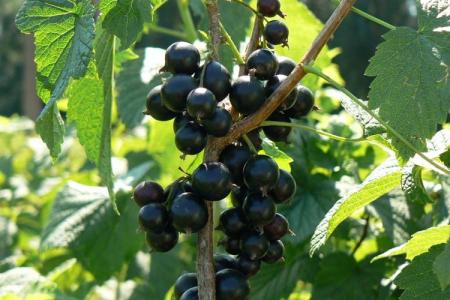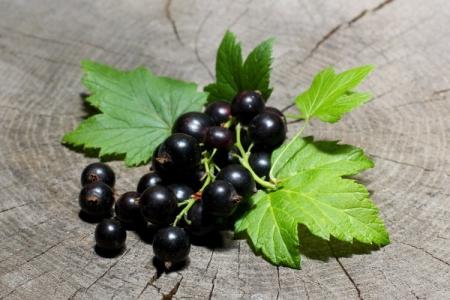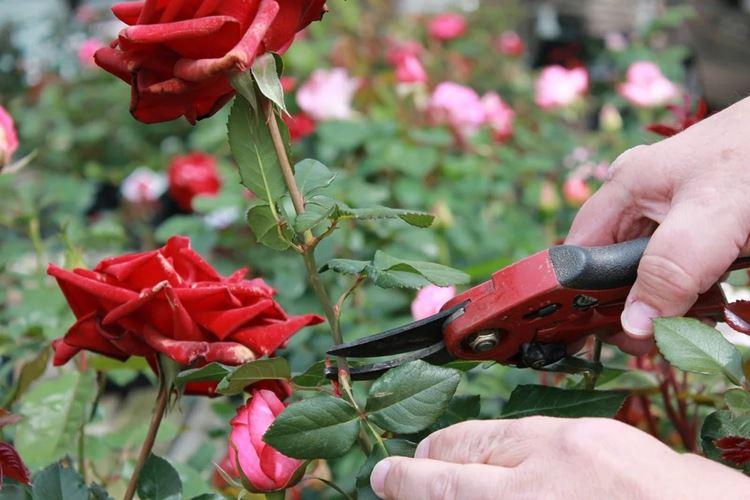
Rose bushes are very beautiful, but at the same time they are quite capricious and require careful maintenance. One of the most important procedures, which is unrealistic to do without, is pruning roses in spring. After all, you need to get rid of weak shoots, rejuvenate the bush after winter and correct its shape. Pruning also stimulates active vegetation, and in summer such a rose blooms longer and better!
When should you prune your roses?
There are no specific pruning times that are universal for all occasions. You need to be in time before the active movement of the juice, so as not to harm the roses. But you need to wait until the frosts finally come down, because a sharp cold snap is immediately dangerous.
Pick a moment when the buds are swelling, but the shoots are not growing yet. In mid-latitudes, this is approximately the end of March or the beginning of April, but in the north it may be the end of May. It should be a sunny warm day to minimize stress on the plant.
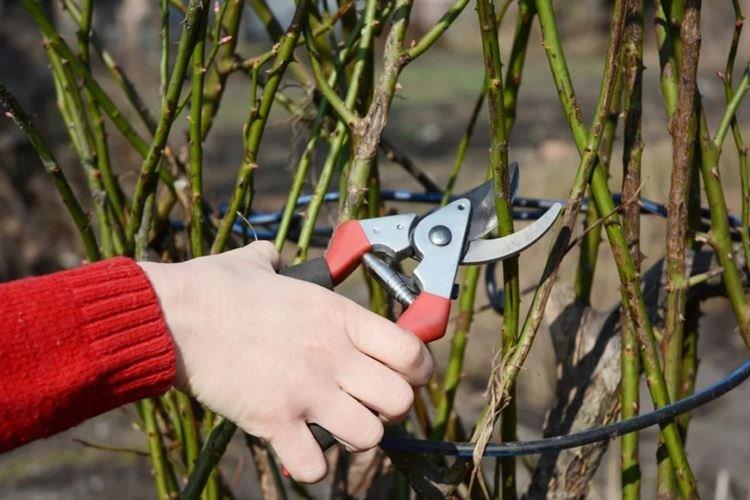
Types of trimming
Roses are pruned several times during the season, but spring pruning is the main one and it can solve different problems. It all depends on the variety, age, shape and characteristics of the shrub. And, of course, from your expectations and plans for him.
Thinning pruning of roses
This is the main pruning for the health of the rose, because sick, rotten and frozen branches are removed. Cut off weak branches and everything that grows deeper, because in the future they will not cause anything but problems. If some shoots have not bloomed all last season, they can be rejuvenated and shortened to the first swollen bud.
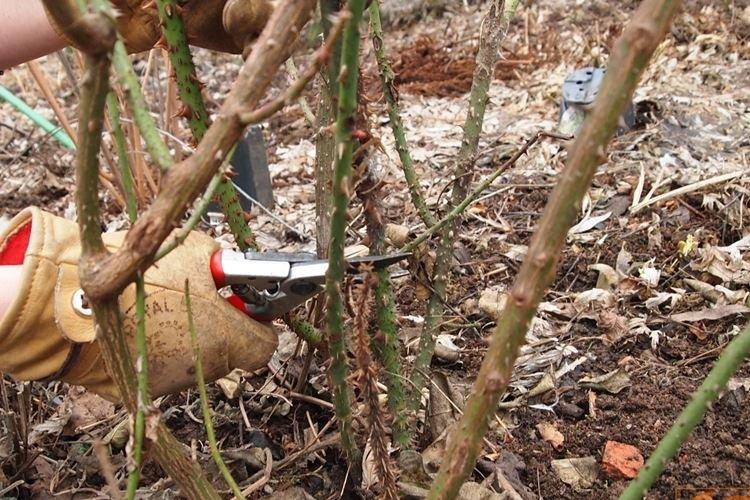
Rejuvenating pruning of roses
Such pruning is needed for adults or too actively growing shrubs. Usually these are roses that are more than three years old, and young stems do not have enough space and resources. Thin out old shoots and leave only a few of them, and shorten all other branches to 25 cm.
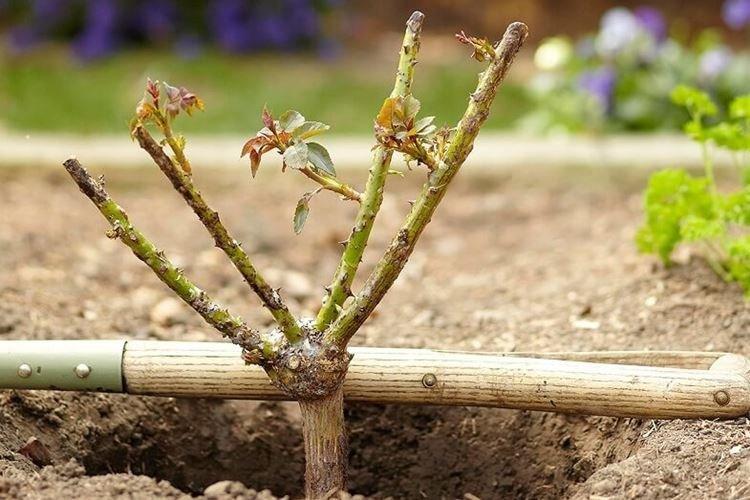
Preventive pruning of roses
Such pruning is needed for young roses that do not need shaping or rejuvenation. Cut off any unhealthy, frozen and weak branches under the base. And cut the injured or damaged ones just above the healthy kidney.
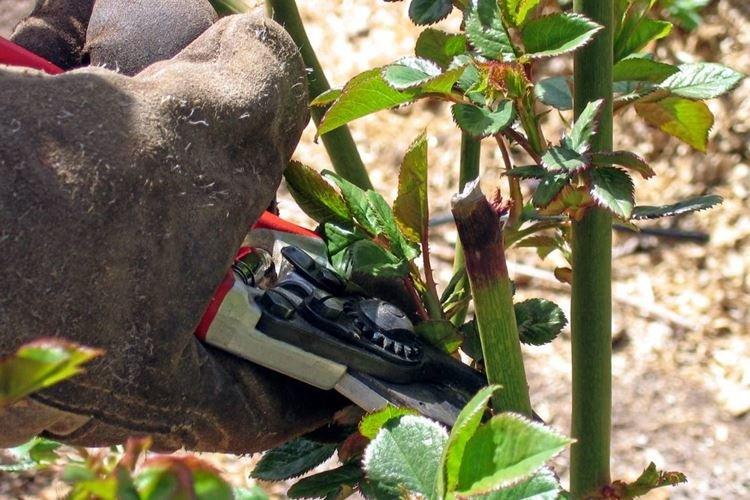
Spring pruning of roses: where to start
First, prepare and disinfect your garden pruner and hacksaw with potassium permanganate or antiseptics. Take the tools very sharp so that there are no cracks and lacerations. Any defects instead of a smooth cut are fraught with fungus, rot and other troubles.
Always cut at a distance of about 5-7 mm from a healthy kidney at an angle of 45 degrees. The bevel is needed so that moisture does not stagnate, because of which the shoot can begin to rot. This is not so difficult, because regular rain or scheduled watering is enough.
Leave a couple of buds on old healthy stems, and 3-5 on annual ones. Cut the weak branches completely to the first bud. Carefully process all cuts with garden pitch and spray the bushes with copper sulfate - 100 g per bucket of water.
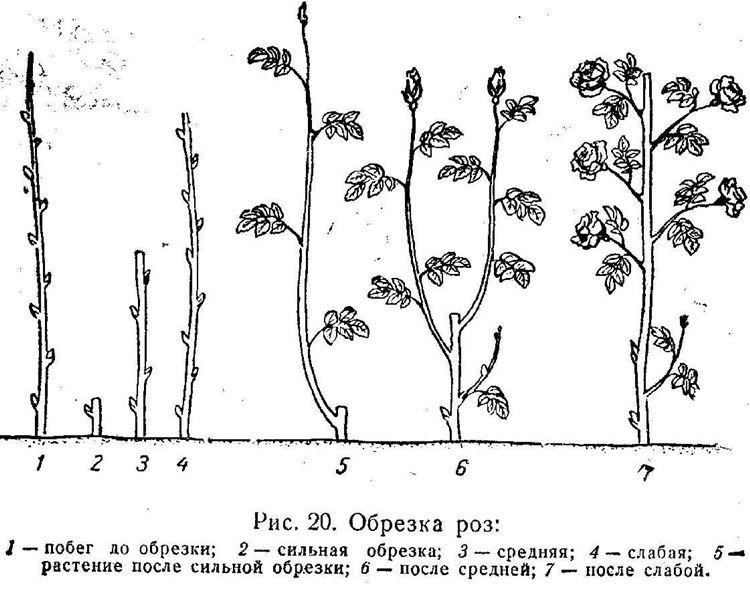
How to care for roses after pruning
Roses after spring pruning definitely need regular and abundant watering with loosening of the soil. After a week, treat the garden with insecticides for prevention. Use compound or ammonia to stimulate growth. Mulch the soil to better retain moisture and beneficial components.
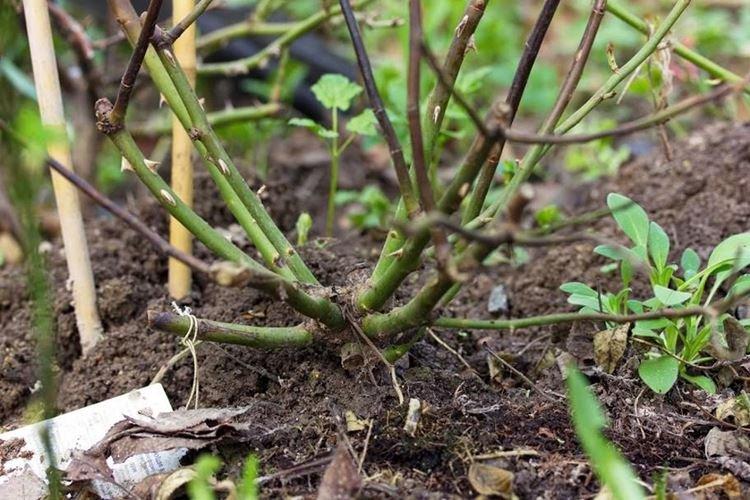
How to cut roses of different varieties - video
In fact, there is no single universal rose pruning scheme. Different varieties have their own characteristics, because they can be not only bush. There are also climbing, curly, tea and hybrid roses. Here are some of the most popular types!
Bush roses
Bushy varieties should be pruned to form a spectacular dome with an empty center.This is not a question of aesthetics alone, but also of health, because otherwise the plant inside will begin to ache and rot due to constant humidity, lack of light and air.
Leave up to five strong adult shoots and tame the rest. To make the crown lush and thicker, cut the young branches not to the bud, but with it. Because of this, the following buds grow better, and the shrub turns out to be more voluminous.
Rose floribunda
A popular ornamental variety with large flowers requires a bit of a specific approach. Some of the shoots are cut off radically, and some - quite a bit. This will stimulate lush, uniform and long-lasting flowering throughout the season.
English roses
To grow a large, spreading bush, pruning in the spring should be minimal. Take away the weakest, most sick and frozen parts. But to form a voluminous compact bush, shorten all branches by one height by about two-thirds.
Climbing roses
These are curly varieties that braid the supports and nearby objects, so pruning looks different for them. For young plants, sanitary pruning is enough, but adults and thick ones from the second year need to be thinned out. Otherwise, air and light will not penetrate deeply, which is why the rose sluggishly and blooms little. Cut the main branches to the first bud, remove the inner ones completely, and shorten the most elongated stems to a beautiful shape.
Curb roses
Small curb bushes are good for their gracefulness and neat shape, so they need to be maintained. Leave the most beautiful central branches, but shorten the extreme ones. To maintain the proportions of the bush, curb roses will need pinching.
Stamp roses
Standard varieties are cut minimally, strictly according to need, because they are very sensitive and delicate. The bush may not recover from such stress and will never be attractive again.
Hybrid tea roses
These varieties have an interesting feature: only young shoots bloom, so feel free to cut off branches older than two years. It is enough to leave about five of last year's stems. Young bushes are shortened to 2-4, and adults - up to 5-6 buds.
Ground cover roses
Groundcover varieties do not need to be formed, but they do need light sanitary pruning. Throw out too dense thickets, and remove the branches that grow upward. Strong anti-aging is carried out approximately every five years.
Park roses
Park roses are shortened so that they bloom thicker and more luxuriantly, but taking into account the places of grafting. It is necessary to completely remove the shoots under the graft so that they do not drag resources over to itself. Too elongated and weak stems, shorten to about 80 cm and cut off those that interfere with each other.
Indoor roses
Indoor varieties of roses also need to be pruned so that the flowerpot is beautiful, neat and tidy. Shorten all last year's branches to 3-4 buds or carry out a radical rejuvenation if the flowerpot bloomed poorly last season.


